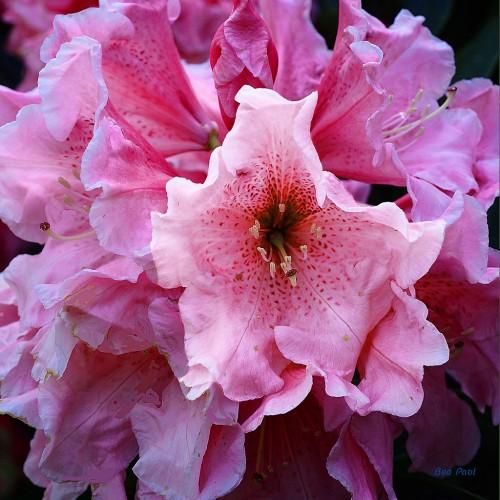
rhododendron
Rhododendron INKARHO LAKEVIEW PINK
Cycle:
Perennial
Watering:
Average
Hardiness Zone:
Flowers:
Flowers In Spring
Sun:
Part shade
Leaf:
Yes
Growth Rate:
High
Maintenance:
Moderate
Care Level:
Medium
watering
Rhododendron INKARHO LAKEVIEW PINK should be watered deeply 2 to 3 times a week during its active growth phase from late spring to early summer. During the rest of the year, water sparingly when the top layer of soil feels dry to the touch. Be sure not to waterlog the soil, as these plants do not like to stand in soggy soils. Soiltesting can help ensure the correct pH balance. Mulching around the base of the plant will help it retain moisture for longer periods.
sunlight
Rhododendron INKARHO LAKEVIEW PINK plants should be grown in locations that receive at least 4 to 6 hours of direct sunlight a day. When selecting a planting site, remember that once in bloom, Rhododendrons will need more intimately dappled sunlight. However, placing them in too little light will reduce the quality and quantity of blooms. In zones 7 to 9, morning sun with protection from afternoon sun is ideal. In cooler climates, Rhododendrons need greater sun exposure to increase flowering and prevent leaf burn. In general, Rhododendrons prefer morning sun with protection from the intense afternoon rays. However, if the plants receive too much shade, there will be fewer blooms and leaf growth can be reduced.
pruning
Pruning Rhododendron INKARHO LAKEVIEW PINK is best done in late winter or early spring before growth begins. The aim is to keep them well shaped and remove any dead or damaged branches. This ensures that the plant gets plenty of sun and airflow, and that new growth is attractive. Generally, up to 1-third of the length of each stem can be safely removed. Remove dead blooms after flowering, but leave the flower buds intact to ensure next year’s blooms. If necessary, pinch the sides of shoots and trim off unnecessary growth to prevent them from becoming overcrowded.
